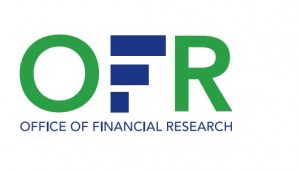The Office of Financial Research (OFR) published on February 12, 2015 “Systemic Importance Indicators for 33 U.S. Bank Holding Companies: An Overview of Recent Data“ by Meraj Allahrakha, Paul Glasserman, and H. Peyton Young, an interesting examination on how individual banks score on systemic risk. We take a look in a two-part post.
This first post will look that what the regulators measure when looking at large banks, including global systemically important banks (G0-SIBs). What defines a global systemically important banks (G-SIBs)? “…These are banks whose failure could pose a threat to the international financial system…” That is not to say they are more likely to fail, just that if they do, watch out. Data comes from the Federal reserve’s Form Y-15 “Banking Organization Systemic Risk Report” filed by US bank holding companies with $50 bio or more in assets. Banks reported their data in August 2014 based on December 2013 numbers. 33 banks, including 8 subsidiaries of foreign banks filed.
There are 5 categories that the banks are evaluated and scored on. We have included the sub-categories as well as the weighting:
- Size
- Total Exposures (20%)
- Interconectedness
- Securities Outstanding (6.7%)
- Intrafinancial system liabilities (6.7%)
- Intrafinancial system assets (6.7%)
- Substitutabiity
- Underwriting activity (6.7%)
- Assets under custody (6.7%)
- Payments activity (6.7%)
- Complexity
- Level 3 assets (6.7%)
- Adjusted trading and AFS securities (6.7%)
- Amount of OTC derivatives (6.7%)
- Cross-Jurisdictional Activity
- Total cross-jurisdictional liabilities (10%)
- Foreign claims (10%)
What are the regulators trying to get to in each category?
“…Size: This category has a single indicator, a comprehensive measure showing a bank’s total exposures. The indicator reflects total assets plus the net value of certain securities financing transactions plus credit derivatives and commitments as well as counterparty risk exposures. This measure of size is also used to calculate a bank’s supplementary leverage ratio under the Basel III international banking accord…”
“…Interconnectedness: The failure of a bank to meet payment obligations to other banks can accelerate the spread of a financial system shock if the bank is highly interconnected. This category includes measurements of a bank’s total claims on the financial system, its total liabilities to the financial system, and the total value of debt and equity securities issued by a bank…”
“…Substitutability: A bank is more systemically important if it provides important services that customers would have difficulty replacing if the bank failed. Three indicators measure this effect: a bank’s payments activity, assets under custody at the bank, and the bank’s total underwriting transactions…”
“…Complexity: A bank with highly complex operations is more difficult to resolve and has a broader impact if it fails. Complexity is measured by a bank’s notional amount of over the-counter (OTC) derivatives; total amount of trading and available-for-sale securities; and total illiquid and hard-to-value assets, which are also known as Level 3 assets…”
“…Cross-Jurisdictional Activity: Banks with international operations can transmit problems from one region to another during a financial crisis. Global banks are also more difficult to resolve because they require coordination among national regulators. The scale of a bank’s global activity is measured by its total foreign claims and its total cross-jurisdictional liabilities…”
As we will discover in our next post, not every bank has a high score in each category and the range between bank scores is pretty big.


